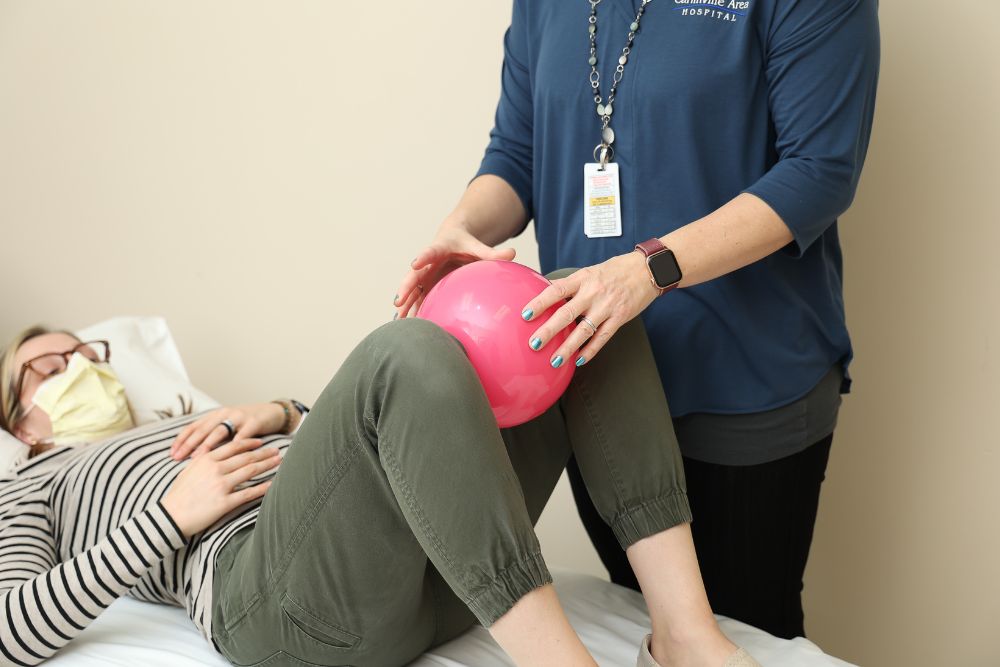Pelvic Floor Therapy
What is your pelvic floor?
Your pelvic floor is a group of muscles and connective tissues that hold the organs in your pelvis and help stabilize your core during important body functions like voiding waste, intercourse, and giving birth. It even assists your body when you cough, sneeze, or lift heavy objects, absorbing pressure in order to protect your spine and organs. Essential organs that are supported by your pelvic floor include your bladder, bowel, and internal reproductive organs.
Over time, your pelvic floor can weaken due to injury or age, leading to health concerns like incontinence, complications during childbirth, and prolapse. It is important to exercise your pelvic floor muscles in order to avoid these negative effects.
What is pelvic floor therapy?
Pelvic floor therapy is a type of physical therapy that is designed to relieve you of the effects of pelvic floor dysfunction along with giving you the tools to help train the muscles to work the way they should. Pelvic floor therapy can be especially helpful for women preparing for childbirth and even postpartum. Pelvic floor therapy uses a variety of treatment options that include:
- Manual therapy – During this treatment, your therapist applies hands-on pressure and massage to your pelvic floor muscles in order to improve blood flow and help the muscles relax and stretch.
- Biofeedback – This treatment uses a device that can measure the contractions of your pelvic floor muscles and watch for improvements in muscle function. This is either done through the placement of electrodes or internal probe.
- Patient education – Our providers want to give you the tools to help you live a healthy lifestyle. Your physical therapist will provide you with general exercises (like Kegels) that you can do on your own to promote long-term pelvic floor strength and function.
- A plan tailored to you – Your therapist will work to create a plan with exercises specified to your body’s needs that can help restore normal mobility and improve muscular balance and control.

Diagnoses that can be treated with pelvic rehab include:
If you are experiencing any of the following symptoms/diagnoses, talk with your provider about starting Pelvic Floor Therapy. Postpartum pelvic pain and incontinence symptoms do not need to be ignored. Pelvic floor therapy can help improve function while decreasing pain.
- Chronic pelvic pain
- Incontinence and other urinary dysfunctions
- Painful intercourse
- Complications due to childbirth
- Prolapse
- Vaginal pain
